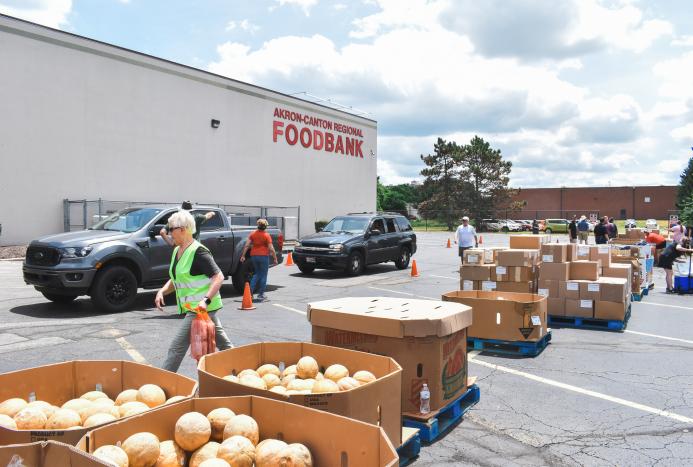As the community rebounds from the pandemic, families who lost everything and are trying to replenish their emergency funds, are now dealing with the cost of inflation. Increased prices for food, gas and other essentials can make it difficult for families to stay within a budget.
During the last 12 months, inflation rose to more than 9% in the U.S., the steepest rise in prices since 1981. Though families are paying more for household necessities, in most cases, wages haven’t increased to help make up the difference. Many are forced to make difficult decisions, like choosing between nourishing groceries and filling their gas tank, paying for rent, childcare, medication and more.
Thankfully, there are 600 hunger-relief programs within the Foodbank’s eight-county region that can help offer families support during this difficult time.
But inflation also impacts the Foodbank. Rising costs, coupled with supply chain issues, have made it hard for the Foodbank to secure food donations. Typically, the Foodbank receives donations by the truckload from manufacturers, retailers, wholesalers and farmers. But manufacturers are not overproducing food, and what is being produced is selling at the retail level.
Additionally, food donations from the USDA and local food donors are down 53% in 2022 vs. 2021.
The Foodbank has responded to a shortage in donations by purchasing more food than ever using financial contributions from generous donors. With a 10–15% increase in food purchase prices, as well as increased cost for shipping and freight, this support means all the difference for your Foodbank and families facing hunger.
“Food banks are having a really difficult time navigating the current economic climate. We believe staffing shortages, cost of fuel and freight, materials shortages, and high demand are all contributors to these shifts in the food industry, making it extremely difficult to procure and distribute food to our network of hunger-relief partners,” said Dan Flowers, Foodbank president and CEO. “In the end, our neighbors facing hunger will feel this strain, and we simply can’t let that happen. We’ll
do whatever we need to do to ensure access to nourishing food for families in Northeast Ohio.”
Thank you for supporting your Foodbank throughout this trying time. Your financial contributions help feed the 1 in 7 individuals in our community who may struggle with food insecurity.

